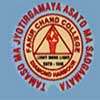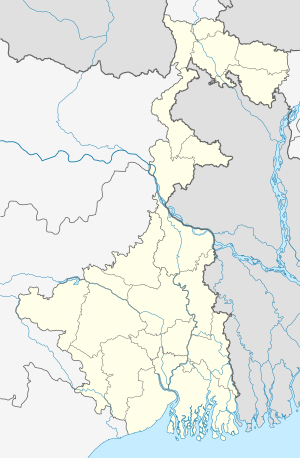Fakir Chand College
Fakir Chand College in Diamond Harbour, West Bengal, India, is a liberal arts, science and commerce college, situated 45 kilometres (28 mi) from Kolkata. It is affiliated to the University of Calcutta. It has almost 100 teaching staff (50 full-time and 50 part-time, guest or visiting faculty), 50 support staff and 5,500 students. It is the oldest and largest college in the South 24 Parganas district of West Bengal. Recently, in November 2016, it has been accredited with a B++ grade by the National Assessment and Accreditation Council (NAAC), under UGC, MHRD, Govt. of India.
| Type | Public (Govt. Aided, UGC recognized & NAAC accredited) |
|---|---|
| Established | 1948 |
| Affiliation | University of Calcutta |
| President | Dr. Sujit Kumar Mandal |
| Principal | Dr. Somen Chanda |
| Address | Ward no:16, College Rd , Diamond Harbour , , 743331 , 22.1965897°N 88.1787858°E |
| Campus | Urban |
| Website | Fakir Chand College |
 | |
 Location in West Bengal  Fakir Chand College (India) | |
There are three streams of study in the college, arts, science and commerce. The college is a study centre of IGNOU and Netaji Subhas Open University. The college has one N.C.C. and two N.S.S. units. It also has a B.Ed. Department and Post Graduate section offering M.A./M.Sc./ M.Com courses under University of Calcutta in Education, Bengali Language & Literature, History, Finance & Accounts and Mathematics.
History
Fakir Chand College stands today in Diamond Harbour in the southern part of West Bengal. It is the culmination of the vision of one man to bring higher education facilities to the people of this area. About 100 kilometres (62 mi) from south to north, there was no college before independence. The academically inclined would have to travel to Kolkata. This was a difficult proposition, physically and financially, for many.
The setting up of the college was envisioned as far back as 1925, but it was possible to set it up only in 1948, when Calcutta University planned a decentralisation of higher education. Jagadish Chandra Halder, a local businessman, set up Fakir Chand College in the memory of his father. The beginning was with intermediate courses in arts and science. In the 1955-56 academic year, undergraduate courses in arts were introduced. The years from 1958 to 1966 were vital years when undergraduate courses in science and commerce, and the B.Ed. course, were introduced during the tenure of principal A.C.Roy.
In 1969, Prof. Hari Rakhal Biswas took over as principal and he introduced a sound system of administration, heralding a new era in the history of the college. Understanding and co-operation among all college administration, faculty, non-teaching staff and students led to highly efficient running of the institution. Goals were set and reached in planned time and the development then started has never slowed down.
Under the leadership of the present principal, Dr.Subires Bhattacharyya (joined April 2005), the college was accredited by the NAAC and the NCTE and four postGraduate courses have been introduced. Several UGC sponsored seminars have also been organised. The college now has 19 undergraduate courses (pass and honours) in arts, science and commerce, a teacher-training course (B. Ed) and five postgraduate (M.A., M.Sc and M.Com) courses in Bengali, history, education, mathematics and commerce. An eye remains on the economic and social exigencies in the introduction and conduct of courses. University results in different streams are quite satisfactory and a good number of students are admitted regularly in the various postgraduate courses under Calcutta University and other institutions of higher learning. Educational excursions and field-trips are arranged on regular basis.
Library
The college library was established by Jagadish Chandra Halder, in memory of his father, in 1948 at Diamond Harbour Boys School. In 1952, it was moved to the ground floor of the present main campus of Fakir Chand College. Initiall,y it only had a collection of books of arts subjects. It now has a large collection of books, reference materials and journals of arts, science and commerce subjects and photocopying facilities. Enough space was allotted to accommodate the library in the second floor of the college.[1]
The library has a collection of more than 52,191 volumes and is divided into three broad sections – the UG, PG and the B.Ed sections.
An online public access catalog is available.[2]